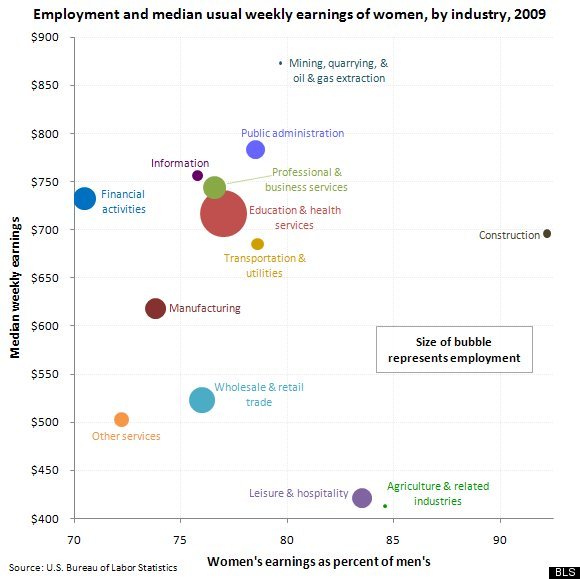The Economics of Women in the Workplace
Please note that we are not authorised to provide any investment advice. The content on this page is for information purposes only.
Women in the workplace play an integral role in contributing to the success of economies around the world. In the US, women in the workforce have been contributing to a large part of the US economy since the 70s. The productive power of women in the workforce accounts for a quarter of GDP, but the full potential of women in the US economy remains untapped.
Women in the workplace play an integral role in contributing to the success of economies around the world. In the US, women in the workforce have been contributing to a large part of the US economy since the 70s. The productive power of women in the workforce accounts for a quarter of GDP, but the full potential of women in the US economy remains untapped.
Not enough women are making it from middle management to vice-presidential level in a time when highly capable and experienced women are focused on leading. Corporations have much to lose by not building diversity in top management.
McKinsey & Company conducted a study among 2,500 men and women to find out how women contribute to the US economy. Here’s a summary of their findings:
Between 1970 and 2009, women went from holding 39 percent of jobs to 48 percent. Without the additional 38 million women in the workforce, the US economy would be 25 percent smaller today. For this trend to continue, women in the workforce are a critical aspect of GDP growth from productivity.
About 76 percent of American women aged 25-54 are employed. The figure is still lower than Sweden’s 87 percent. The reality is: women don’t chose not to work, they can’t afford to. What remains to be improved is fully tapping the talent of high-skilled women. In 2010, 58 percent of college graduates were women. Only 50 percent are employed in the workforce.
Too few companies employ enough women. Fewer still in significant leadership roles within an organization. When asked “What do you believe is the most important leadership attributes for success today” the top four business leaders pointed to: intellectual stimulation, inspiration, participatory decision-making and setting expectations/rewards. Attributes more commonly found in women.
It turns out of the 53 percent of female new hires, only 37 percent of women are promoted to managers. At the vice-presidential level, only 26 percent are female – and only 14 percent of the executive committee.
L’est we forget the income inequalities that still exist today:
Chart from Baldridge.
The number of women CEOs on the Forbes 500: 3 percent.
The odds are disheartening for women who are strongly convicted about their abilities and desire to advance in the workplace. Many women make a decision to fulfill their ambition elsewhere looking at the odds of making it through the pipeline.
However the most insidious barrier for women is the mindsets. “Everybody ‘knows’ you can’t put a woman in that particular slot” or “That job could never be done part-time” for working mothers who continue to work after motherhood – though downshift.
On the other hand, women tend to be less satisfied than men with their chosen professions and jobs.
Nevertheless, women never lose their belief in their abilities. But over time, if the barriers get larger and women start to believe there is no opportunity ahead, their willingness to keep pushing will shrink.
The US and other countries must look for ways to make better use of women in the workplace. Companies have a promising opportunity to focus on advancing their women in the workplace. Women in middle management positions have already demonstrated superior capability. Now it’s time for the next step. Because when women make it to senior management, their aspiration to lead rises again. At the top, gender diversity can only be a good thing.
So how can you as a business owner or leader make a difference?
Start by changing people’s minds about what it means for women to hold leadership roles.
Promote people at work fairly, regardless their gender and have metrics in place that doesn’t discriminate against gender.
Provide training opportunities to both men and women, equally.
And affect change from the top, down.
Liz Zuliani
EconomyWatch.com





